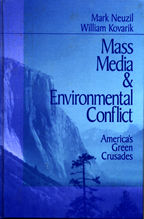 Breathtaking. The sheer mad genius of the thing.
Breathtaking. The sheer mad genius of the thing.
Journalists bribing security guards. Tapping cell phones. Hacking computers. Spying on emails.
And not just once in a while, like the Cincinnati newspaper’s Chiquita banana episode in 1997, or the Chicago Mirage Bar sting of 1974.
But permanently, as part of an ongoing operation, with an A-list of targets including British prime ministers, rock stars, crime victims, even the royal family. Like Watergate in reverse gear.
The unprecedented, unmitigated gall of News Corp. and its cheesy tabloid: To run a private spy agency and dress it up as a newsroom.
In February, 2012, investigators announced that it wasn’t just the News of the World, but also the Times of London. Five journalists from Murdoch’s Sun were also arrested. And what has now become known as the “Leveson Inquiry” just keeps getting better.
These hacking operations also took place in the US. In fact, they were standard operating procedure for News Corp. Former staffers of News Corp. papers say they were insulated from direct lawbreaking when News Corp. routinely employed private investigators.
Dan Cooper, formerly of Fox television, told the Nation magazine:
Deep in the bowels of 1211 Avenue of the Americas, News Corporation’s New York headquarters, was … the Brain Room. Most people thought it was simply the research department of Fox News. But unlike virtually everybody else, because I had to design and build the Brain Room, I knew it also housed a counterintelligence and black ops office. So accessing phone records was easy pie.
Continue reading →








 Revolutions in Communication
Revolutions in Communication Mass Media & Environmental Conflict
Mass Media & Environmental Conflict